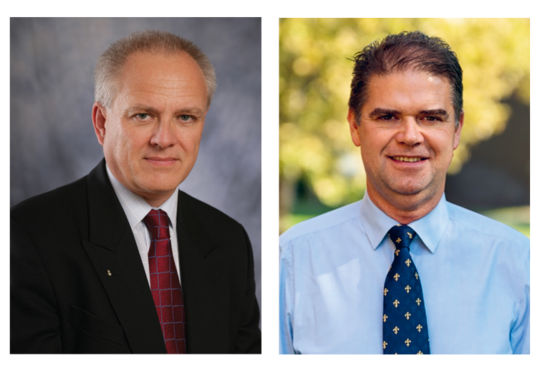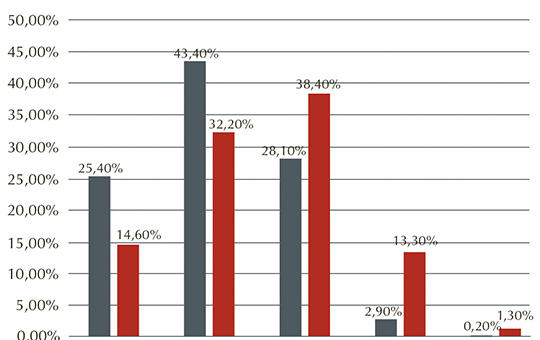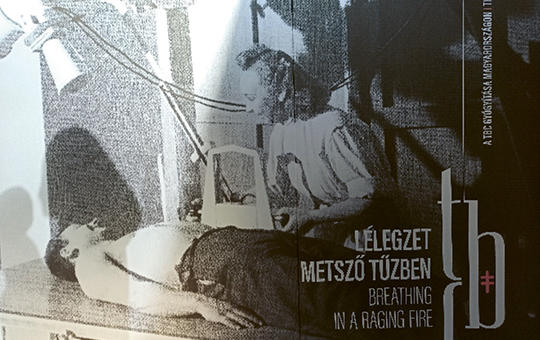The eLitMed.hu medical portal uses computer cookies for convenient operation. Detailed information can be found in the Cookie-policy.
Lege Artis Medicinae - 2022;32(08-09)
Content
[Practice and special challenges of anticoagulant therapy in patients with atrial fibrillation]
[Atrial fibrillation is one of the most important, common and clinically significant arrhythmia. This arrhythmia alone is the most common that causes stroke, other systemic thromboembolism (STE), and heart failure. Atrial fibrillation increases the risk of stroke 2.5-fold, the risk of heart failure 5-fold, and cardiovascular mortality 2-fold. Prevalence in patients over 20 years of age is already 3%, and higher in selected patient populations such as patients with hypertension, obesity, diabetes, heart failure, renal failure, and valvular disease. Atrial fibrillation may occur in 2.3% of people over 65 years of age. In the first half of 2010, the total number of patients with atrial fibrillation was estimated at 33.5 million (of which 20.9 million were men), but with regional heterogeneities. The incidence of atrial fibrillation is 0.2–0.4 / 1,000 per year. Prevalence - based on European data - in the under-50 age group is between 0.12–0.16%, in the 60–70 age group is between 3.7–4.2%, and in the 80 year and older population it can reach 10% to 17%. The number of newly diagnosed patients in Hungary is 0.46%, with a prevalence of 3.1%. In 2015, the number of patients treated with atrial fibrillation was 306,914 and the number of newly diagnosed patients was 45,333. Based on European surveys, 14-17 million patients are expected to have diagnosed atrial fibrillation by 2030, which means more than 100,000 new diagnosed cases per year than now. The incidence of atrial fibrillation is increasing, therefore its appropriate and up-to-date treatment is particular importance both at the level of primary care and specialized care. In this publication, the authors present guidelines and challenges related to anticoagulation in patients with atrial fibrillation.]
[Code of transparency for health economic analyses of social security applications ]
[With the widespread use of health technology assessment (HTA) in developed countries, including Hungary, evidence-based health policy making has become commonplace. Transparency in decision making has improved in recent years: both the National Health Insurance Fund and the National Institute of Pharmacy and Nutrition share more and more information related to decision making. However, the scientific evidence aggregated in HTA dossiers is not yet in the public domain.
In the context of the renewal of the methodological guidelines for the economic evaluation of health technologies the Hungarian Health Economics Association has set up a working group to draft this Code of Transparency.
The Working Group divided the different chapters of the guideline into three categories. Out of the 28 chapters, the Code recommends publication without restrictions for 20 chapters, publication with restrictions for 5 chapters and no publication for 3 chapters. The latter category typically includes confidential information.
The Code can help relevant members of the society – including health care professionals, patients and re-searchers – better understand the available evidence, analyses and other aspects of different health technologies. It can also indirectly contribute to improving the quality of assessments and ultimately to the development of HTA methodology.]
[The impact of COVID-19-pandemic on pharmacy workers' mental health and pharmacist communication]
[The present study examined the impact of the first three waves of the Covid-19 pandemic on the mental health of Hungarian pharmacists and the way of communication with each other, patients, and physicians. Our online survey was conducted during the spring of 2021, after the 3rd wave of the epidemic (N = 300). In addition to pharmacist communication, our research also measured perceived stress and burnout. The vast majority of respondents reported their workload to be increased compared to the pre-epidemic period. Patients became more open to counseling, their need for conversation increased, and their problems often exceeded their pharmacist competence. The number of aggressive patients increased in the pharmacies. The level of perceived stress was high in the sample, and an increased risk of burnout has been identified. Pharmacists working for a longer time in this profession tended to be less stressed by the challenges during the epidemic. The more common aggressive behavior among patients, and the higher level of perceived stress were strongly correlated. The COVID 19 epidemic has placed a significant mental burden and communication challenge on pharmacists. In addition to professional support, it would be especially necessary to provide psychological counseling for free.]
[Hungarian medical students’ career choice motivations, focused on family medicine]
[Hungarian medical students’ career choice motivations, focused on family medicine Hungarian primary care is facing a major human resource crisis. The number of permanently vacant GP practices constantly increases. The number of new doctors entering to the GP training is insufficient to reverse this negative trend. The main goal is to increase the popularity of family medicine and to orient as many medical students towards primary care as possible.
Cross-sectional survey with 465 fourth and fifth year medical students who attended in family medicine course from December 2019 to April 2020.
5% of the students plan to work as a general practitioner in the future. General pactice was the second choice of 4.7% of students and the third choice of 8%. The prestige of the profession, on a 5-point Likert scale, generally rates as average, but rather poor among other fields’ specialists (average: 3.13 vs. 2.39; median: 3 vs. 2; mode: 3 vs. 2). The most common negative perceptions about the speciality are low prestige (44.3%), too much administration (41.9%). The most common ideas for increasing the attractiveness are “part-time work in another field” (56.7%), “better prestige” (48.1%), “higher salary” (47.4%).
Few medical students plan to work as general practitioners in the future. This may be due to the low prestige of the family medicine profession and the lack of credible information on GPs’ salaries. In the future, it would be important to increase the role of practice-oriented education in medical training, and to familiarise students with the work in community practice and the average income of a family practitioner.]
[Burnout among Hungarian teachers]
[Burnout is increasingly prevalent mainly involving employees working in the social sphere. The aim of our study was to examine the burnout among Hungarian teachers.
Baseline demographic data were recorded. Burnout was assessed by the Maslach Burnout Inventory (MBI), and the intensity of dysfunctional attitudes were also studied. Depression was detected by the Beck Scale and social supports, and effort-reward dysbalance were also examined.
Overall 399 employees participated in our study. Age group distribution was young/middle aged access, vast majority of the workers was between 35 and 55 years. Mean burnout scale was 59.3 (SD = 13.6), 41 workes had mild (11.9%), 298 had moderate (86.1%) and 7 had severe (2%) burnout. In a multivariate analysis female gender (OR = 2.917), family with many children (OR = 4.157), allowance (OR = 3.306), years at work (OR = 2.732) and the lack of (OR = 1.464) were independently associated with burnout (p < 0.05 in all cases). There was a significant association among burnout, depression and dysfunctional attitudes (r2 = 0.415 < 0.001; r2 = 0.237, p < 0.001).
Vast majority of our teachers suffered from moderate and a small, but significant proportion suffered from severe (2%) burnout. Our work draws attention to the modifiable (allowance, appreciation) and unmodifiable (age, gender, family) risk factors of burnout in this population, which may help in the development of preventive strategies.]
[Shame as medical phenomenon]
[The author offers a fresh perspective on describing, understanding, and managing the shame that has been problematizing in medicine over the early years of the 21st century. Reviews the phenomenon of shame and briefly summarizes the relevant empirical psychological, neurobiological and infant research findings of the topic. Discusses those disorders in which shame plays a key role. He concludes that the theoretically grounded shame research has reached the critical mass required for the cohesion of shame-resilient practice in a non-shameful therapeutic space. Practice, on the other hand, fertilizes the theoretical development.]
1.
Clinical Neuroscience
Is there any difference in mortality rates of atrial fibrillation detected before or after ischemic stroke?2.
Clinical Neuroscience
Factors influencing the level of stigma in Parkinson’s disease in western Turkey3.
Clinical Neuroscience
Neuropathic pain and mood disorders in earthquake survivors with peripheral nerve injuries4.
Journal of Nursing Theory and Practice
[Correlations of Sarcopenia, Frailty, Falls and Social Isolation – A Literature Review in the Light of Swedish Statistics]5.
Clinical Neuroscience
[Comparison of pain intensity measurements among patients with low-back pain]1.
Clinical Neuroscience Proceedings
[A Magyar Stroke Társaság XVIII. Kongresszusa és a Magyar Neuroszonológiai Társaság XV. Konferenciája. Absztraktfüzet]2.
3.
Journal of Nursing Theory and Practice
[A selection of the entries submitted to the literary contest "Honorable mission: the joys and challenges of our profession" ]4.
Journal of Nursing Theory and Practice
[End of Life and Palliative Care of Newborns in the Nursing Context]5.
Journal of Nursing Theory and Practice
[Aspects of Occupational Health Nursing for Incurable Patients ]













